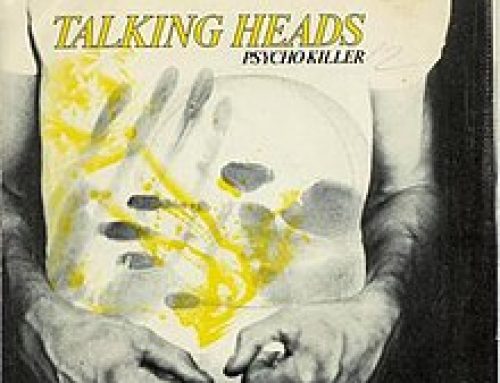On July 1, 1863, General Richard S. Ewell of the Confederate Army had a golden opportunity that could change the course of history. It’s the first day of the Battle of Gettysburg and Union soldiers, under General William Scott Hancock had retreated and dug in on Cemetery Hill. Unfortunately for the south, Ewell did not have the manpower needed and failed to capitalize on the situation. Eventually, the Confederate Army tried to take Cemetery Hill in a doomed action now known as Pickett’s Charge. The resulting loss at Gettysburg lead to the defeat of the South. Today, business owners are faced with the same dilemma, they don’t have enough team members to take advantage of the thriving economy. There is a tendency to throw bodies at the problem by quickly hiring anyone who may be qualified. The long-term effects of this strategy could have the same devastating effect on your company as the loss at Gettysburg had on the Confederacy, degraded service and rising costs.
In my September 2017 post, Why Resumes Should be the Last Thing You Consider When Hiring, I talk about interviewing for a cultural fit. Today, I explore best practices for hiring with Author and Consultant Rebecca Barnes-Hogg, author of “The YOLO Principle: The Ultimate Hiring Guide for Small Business”.
Q: What is the biggest problem you see with the hiring process today?
Too many organizations are using outdated techniques and technology. The most common is post and pray. Basically, posting a boring job description on a job board and praying that great candidates apply. The problem with this approach is job descriptions are boring and lack excitement. They’re rarely focused on what a candidate wants to know.
It’s a tight labor market which means candidates can afford to be selective. To reach candidates who may be interested in a new position but not actively looking, you’ll need to stand out from the crowd and be different. This means you must try new and different ways to reach candidates. Use video, social media, and get creative. Ikea recruited customers by putting “build your career with Ikea” instructions with their product assembly instructions. Think about how you can creatively package your jobs and reach your ideal candidates.
“Too many organizations are using outdated techniques and technology. The most common is post and pray. Basically, posting a boring job description on a job board and praying that great candidates apply. The problem with this approach is job descriptions are boring and lack excitement. They’re rarely focused on what a candidate wants to know. “ CLICK TO TWEET ![]()
Q: Why is it that we can hire new team members, that have been successful in the same position with our competitors, but they don’t work out with us?
Often an organization will focus on technical skills and neglect cultural fit. Your business has a personality (or culture) that is unique to you. You’ll want to understand your organization’s core values and how those are incorporated into daily work activities. This can be a simple exercise of identifying your top three to five values and then giving examples of what those values mean in terms of how work gets done. Words mean different things to different people, so those examples are critical
Q: What is the biggest mistake small business owners do when hiring?
The most frequent mistake I see is hiring fast to relieve pain. Instead, it’s better to be short-staffed in the near term to avoid making a bad hire. When you are operating from a place of pain, your goal is to end the pain. That often means choosing the best of the average or subpar employees who apply for an ad on a job board.
More strategic and intentional hiring is actively going out and searching for passive candidates. This could mean hiring an expert recruiter who has access to resume databases and tools to find great candidates. If your budget prevents that, you can try using social media to advertise your job openings by showing realistic images of your business and employees. You want candidates to see themselves working for you. Use some creativity and try different channels both online and offline. Good old-fashioned networking or calling friends and colleagues and asking for referrals still work.
Q: Can you talk about the cost of a failed hire?
There are so many tangible and intangible costs. Most of us can easily calculate the tangible costs: advertising, training, overtime, or temporary staffing costs. The biggest intangible costs overlooked are lost productivity and lost customers. Other intangible costs are losing great employees because they feel overworked and stressed by the constant turnover caused by bad hires, constant retraining costs, and the time taken from revenue-generating activities to deal with employee issues caused by the bad hire. Or, even worse, there could be lawsuits, damage or theft of expensive equipment, or causing harm to other employees. The costs can quickly reach six figures. If you want to calculate your cost, you can download a complimentary cost of bad hire calculator on my website.
Q: There is a movement towards value-based interviewing, what are your thoughts on the subject.
I think it’s a critical part of any hiring process. Great candidates want to know that their employer shares their values. They want interesting work that makes a difference in some way. It could be in a community, an industry, or the entire world. The point is that aligning values is good for business. Values provide a sense of purpose.
When an employee’s values are out of alignment with organizational values, the symptoms are easy to spot. Mild symptoms might be low motivation like lots of small mistakes, being late or constantly wanting to take a day off. More extreme symptoms could be an employee who talks negatively about his job in front of customers, constantly complains to everyone, creates problems and discord on your team, and causes stress for your good employees.
Q: I advocate using assessments, like my Job Benchmarking service. What are your thoughts on using assessments in hiring?
In terms of assessments during the hiring process, I often recommend a skills assessment instrument especially when the hiring manager may lack the technical expertise to adequately assess an applicant’s skill level. This might be the case if a small business owner is hiring a finance or accounting person and that’s not their background. I’m more cautious when it comes to personality assessments. Too often they are used improperly or without having an expert who can assist with understanding and interpret the results. It’s also critical to make sure you are using a reputable company who has tested and validated the assessment. Used properly, assessments can be a good tool to have in your hiring toolbox.
Q: If you had 1 piece of advice to a small business owner on how to improve their odds on a successful hire, what would it be?
The best thing a small business can do is to be more intentional and strategic about how they hire. Read about current labor market conditions, listen to what candidates are saying about their experiences with potential employers, and please stop using a job description as your job posting. That stopped working years ago. Instead, write a compelling job ad that allows a job seeker to visualize themselves working in your company.
An easy way to be more successful is to read my book, The YOLO Principle: The Ultimate Hiring Guide for Small Business. It’s available on Amazon in paperback and Kindle versions.
The most frequent mistake is hiring fast! It’s better to be short-staffed in the near term to avoid making a bad hire. If operating from a place of pain, our goal becomes ending the pain and choosing average or subpar applicants. Click To TweetFor business owners, the investment in human capital is one of the largest purchases we make. If we hire well, the payback is enormous, hire poorly and the cost could be your entire business. Shouldn’t we spend the time and hire correctly? Take your time, hire right, once and move on.
 Rebecca Barnes-Hogg, author of The YOLO Principle: The Ultimate Hiring Guide for Small Business, is a serial connector of small businesses with their ideal employees. She first discovered this talent as a teenager when she helped her high school classmates find summer jobs. Rebecca recognized early on that at the center of every business is its people. Her passion for hunting purple unicorns (or in real life words, ideal employees) shows in the transformations she helps small businesses achieve. Rebecca’s recruiting insights have been featured in Forbes, Inc.com, Business News Daily, U.S. News & World Report, CBS Small Business Pulse, MarketWatch, Hotel Executive, and HR Magazine. Rebecca is also a coauthor of Rethinking Human Resources.
Rebecca Barnes-Hogg, author of The YOLO Principle: The Ultimate Hiring Guide for Small Business, is a serial connector of small businesses with their ideal employees. She first discovered this talent as a teenager when she helped her high school classmates find summer jobs. Rebecca recognized early on that at the center of every business is its people. Her passion for hunting purple unicorns (or in real life words, ideal employees) shows in the transformations she helps small businesses achieve. Rebecca’s recruiting insights have been featured in Forbes, Inc.com, Business News Daily, U.S. News & World Report, CBS Small Business Pulse, MarketWatch, Hotel Executive, and HR Magazine. Rebecca is also a coauthor of Rethinking Human Resources.
For more information, visit her web page https://yoloinsights.com/










